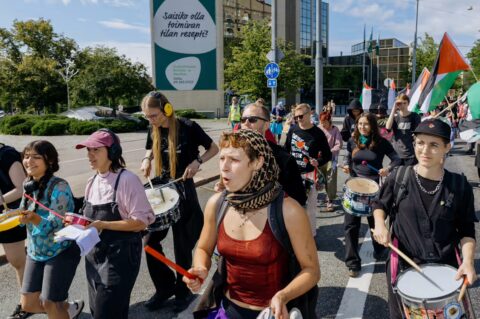Cremation in Denmark has reached record levels, and cemetery budgets are feeling the strain: in Fredericia, managers say they have unused coffin plots and would prefer more traditional burials to keep the grounds financially sustainable.
From coffins to urns: a 25-year shift
Over the past quarter-century, cremation has become the dominant choice for Danish funerals. In 2000, 71.8% of the deceased were cremated, by 2024 the rate had climbed to 87.9%.
The shift toward urn burials reduces demand for two-space coffin graves, leaving sections of cemeteries underused and changing how local authorities plan and maintain burial grounds.
Fredericia’s math: maintenance costs vs. grave revenues
In Fredericia, the administration responsible for ten cemeteries spends 15 million DKK (€2.0 million) annually on upkeep but receives only 7.5 million DKK (€1.0 million) from plot and grave-right fees. The remaining gap is covered by the church tax, according to the cemetery administration.
Managers report “space we cannot use” because families increasingly select smaller and cheaper urn plots instead of traditional coffin graves. To soften the visual impact of empty rows, staff have begun redesigning lawns and introducing perennial beds where coffin graves once stood, while trying to maintain a consistent level of care.

A national shortfall and church tax pressures
The local picture mirrors a national trend. In 2024, the costs of running Danish cemeteries exceeded income from graves and urns by 1.144 billion DKK (€153.3 million), an imbalance that—according to the national association of parish councils (Landsforeningen af Menighedsråd)—now absorbs about one-fifth of the church tax.
Officials stress that cemeteries are part of Denmark’s cultural heritage and must remain respectful, well-kept places for all, regardless of membership in the national church (Folkekirken).
Policy debate: who should pay for cemeteries?
As the cremation trend accelerates, the financing model is under scrutiny. Hans-Henrik Nielsen, who chairs the association’s committee on economy, buildings, cemeteries and green transition, argues that the burden should not fall only on church members.
He describes cemeteries as “the very last element of the healthcare system,” suggesting that broader public funding could be warranted to reflect their universal role.
Cemetery design adapts to fewer coffin burials
Operationally, cemeteries are adapting to new preferences. Where long rows of coffin graves once stood, some sites—such as Assistens Kirkegård in Fredericia—now feature planted beds and other landscaping to repurpose unused areas.
Administrations say they are working to rationalise maintenance while preserving tidy, accessible grounds. Whether a return to more coffin burials would meaningfully narrow the funding gap remains uncertain, but the direction of travel—in Fredericia and nationwide—continues to favour urns.
If cremation in Denmark remains near 90%, the financing pressure on cemeteries is likely to grow. Municipal and church authorities may need to revisit how care is funded and how space is planned, a debate with wider relevance across the Nordic region and the EU as funeral preferences evolve.






